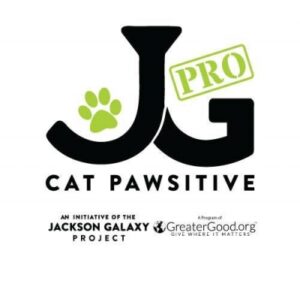Raven Release:
We received a rare patient on May 24th, a young juvenile Common Raven was brought in by a PA Game Commission Officer after being hit by a car. Our Wildlife Rehabbers worked together to come up with a treatment plan and extensive enrichment plan!
This species (as well as American Crows) require an immense amount of space for pre-release conditioning. We consulted with a Corvid Specialist in California to ensure we found the ideal location for our raven. Common Raven’s also must be released with a flock of 4 or more birds. After some research and consulting with local experts from the National Aviary and St. Vincent College, we found the perfect raven family dynamic and location that we could ask for!
The Raven was released and immediately flew into the family’s territory. He did some awesome figure 8s before landing in a Cherry Tree for some morning snacks. Our Raven was accepted into the juvenile Common Raven Group and is thriving!
Fun Fact: All Ravens have a unique family dynamic and do not accept strangers easily! This is why we took great lengths to ensure the proper flock was found to accept our single juvenile Raven.
Tricolored Bat Release:
On August 22nd we received a male Tricolored Bat…a bat we never would have thought to ever come through our door! Tricolored Bats are an Endangered Species here in PA. Aside from being moderately emaciated and dehydrated, he sustained no other serious injuries. Weight gain was our main goal, he was 5.2grams at intake and the goal was to get him to at least 7.0grams before release.
He required the smallest mealworms for food supply and because Tricolored (along with any other Myotis species) are extremely high stress, we had to amp up his enclosure with lots of places to hide and explore. In comparison to Big Brown Bats, these guys are also very sensitive to new individuals while in captivity and require only a select group of 1-3 people for daily husbandry and other handling needs (like administering medications). Over the last few weeks, he has been slowing gaining weight and finally reached a healthy body condition to be eligible for release.
Fun Facts:
- Unfortunately, Tricolored Bats used to be found all over Eastern and Central US, Canada, Mexico and South America, but White-nose syndrome has led to 90-100% decline in Tricolored Bat‘s population.
- In spring, summer and fall, these guys can be found in dead leaf clusters, pine needles or even Spanish moss! In the winter, they hibernate in caves, mines and even abandoned water wells!
- The oldest Tricolored Bat on record according to the USFWS was a male captured 14.8 years, after it was originally captured and banded.
Big Brown Bat Release:
We released 12 Big Brown Bats (11 juveniles and one adult) into an established roost (in the thousands) with help from Wildlife Disease Technician, Molly Byrne, with the PGC.
Fun Fact: White-Nose Syndrome is responsible for killing an estimated 6.7 million bats in North America since 2006. If you notice a bat is grounded, please call our Wildlife Center at 412-345-7300 x. 500 for next steps on how to help.
Striped Skunk Release:
7 Striped Skunks came in as orphaned kits from different litters. The kits required developmental support as well as treatment for upper respiratory infections and dehydration from being separated too young from their mothers. The average length of stay for this group of Striped Skunks was 45 days. The rehabilitators ensured that all our young skunk patients could forge and dig for bugs among other necessary skills needed to survive on their own.
Fun Fact: When Skunks use their defense mechanism, spraying, it takes 7 full days to replenish their supply before they are able to defend themselves again.
Raccoon Release:
We released 36 Raccoons that were hand-reared by our team. These Raccoons came from various orphaned situations, such as, the mother was trapped and relocated without her young, or the mother was shot. The Raccoons moved through an extensive enrichment plan to ensure they had all the proper skills they need to survive on their own, such as fishing and foraging for snacks. The average stay for this group was 100 days, mimicking their family dynamic in the wild.
Fun Fact: Mother Raccoons can count! She knows how many babies she has and keeps track to ensure all of her babies are accounted for in comparison to other mammalian mothers.
Red Foxes Release:
5 Red Foxes came into our care because they were orphaned,1 had severe mange and 1 was hit by a car.Thanks to our awesome team of Wildlife Rehabbers, all seven foxes were nursed back to health and released to their natural habitat
Fun Fact: Red Foxes are the largest species of foxes in the world! Unfortunately in Pittsburgh, our fox population is decreasing due to an increase in sarcoptic mange.
Red-Bellied Woodpecker Release:
This juvenile Red-Bellied Woodpecker was admitted to our clinic on June 21st. After a full exam, our Rehabilitators found he was suffering from severe spinal trauma and a bacterial infection. After extensive treatment and physical therapy, he made a full recovery and was ready for release on July 6th!
Fun Fact: These guys are predominately insectivores, but also will eat nuts, acorns, pinecones and other seeds and fruits. Occasionally (geographically dependent) they will even eat lizards, nestling birds and even minnows!






















